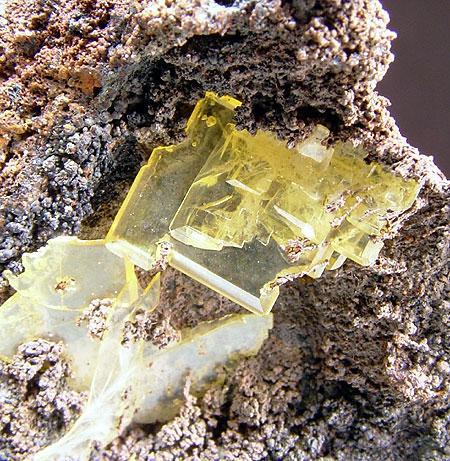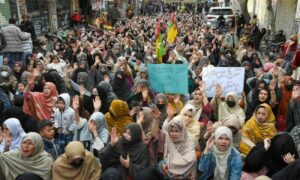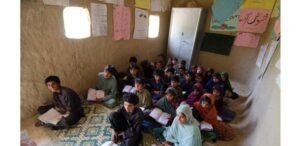Balochistan, Pakistan’s largest province by area, presents a perplexing paradox. Despite being abundantly rich in natural resources, it remains the country’s poorest region. Balochistan, Pakistan’s largest and least populated province, faces severe underdevelopment despite its vast natural resources. The Multidimensional Poverty Index (MPI) reveals the province’s highest poverty level at 71.2% compared to 38.8% nationally in 2015. This disparity is further intensified by a rural-urban divide, where 84.6% of the rural population is impoverished versus 37.7% in urban areas. Weak governance, poor law enforcement, and security challenges, along with difficult terrain and limited resources, contribute to Balochistan’s persistent poverty and inequality.
From the historical background of the exploitation of Balochistan’s reserves to the disadvantages to consider when reading up on the paradox of Balochistan, the region represents a question mark to the governing parties. This disparity raises critical questions about the exploitation of its resources, environmental degradation, and the neglect of regions not central to Pakistan’s political and economic focus. The plight of Balochistan is not just an issue of poverty but also a broader reflection of systemic governance failures and the socio-economic marginalization of peripheral regions.
Balochistan’s Resources

Balochistan’s landscape is a treasure trove of minerals, boasting an impressive array of both metallic and non-metallic resources. The province harbors significant deposits of coal, chromite, barites, sulfur, marble, iron ore, quartzite, and limestone. These resources, if properly harnessed, have the potential to fuel Pakistan’s energy needs and industrial growth.
Coal reserves in Balochistan are particularly noteworthy, with over 90% of the province’s coal being dispatched to other regions for use in brick kilns. The Muslimbagh, Lasbela, Khuzdar, Kharan, and Chaghi districts host sizable chromite deposits, while the area near Khuzdar boasts the country’s largest barytes reserve, exceeding 2 million tons.
The Chaghi district stands out as a mineral hotspot, featuring sulfur deposits at Koh-e-Sultan, vast marble reserves stretching from Dalbandin to the Iranian border, and high-quality onyx. The district also holds an estimated 30 million tons of iron ore. Limestone, another abundant resource, is found in thick layers across Quetta, Kalat, Harnai, Sor Range, and Spintangi areas.
Untapped Potential: Balochistan’s Energy and Precious Metal Reserves
Balochistan’s resource potential extends beyond industrial minerals to include significant energy resources and precious metals. The Sui Gas Field, discovered in 1952, has been a cornerstone of Pakistan’s energy sector for decades, currently producing 300 MMSCFD of natural gas.
The province also hosts world-class copper and gold deposits. The Saindak Copper-Gold Mines yield 7.25 tons of copper-gold annually through smelting. The Reko Diq mine boasts estimated reserves of 5.9 billion tons of ore, containing 0.41% copper and 41.5 million ounces of gold.
- Natural Gas Reserves: Balochistan is home to the Sui Gas Field, one of Pakistan’s largest natural gas reserves, discovered in 1952. It has been a critical energy source for the country, currently producing 300 MMSCFD (Million Standard Cubic Feet per Day) of natural gas. Despite its significance, local communities often do not benefit from this wealth, with limited access to the gas extracted from their land.
- Renewable Energy Possibilities: The province also has immense potential for renewable energy, particularly solar and wind power. Balochistan receives some of the highest solar radiation in Pakistan, making it an ideal location for solar power projects. However, this potential remains largely unexploited due to a lack of investment and infrastructure.
Chromite, another valuable resource, is found in commercial quantities in Muslimbagh and Bella deposits. These mines account for 81% of Pakistan’s total chromite production, averaging 33,273 million metric tons annually. The mineral’s importance in stainless steel production and its high international demand underscore its economic potential for the province.
Historical Context: The Legacy of Colonial Resource Exploitation
The exploitation of Balochistan’s resources has deep roots, tracing back to the British colonial era. During this time, mineral wealth was extracted with little consideration for the well-being of the local population, setting a precedent for external control over the province’s resources. This legacy of exploitation has persisted into modern times, continuing to contribute to Balochistan’s underdevelopment.
- Colonial Era Resource Extraction: The British utilized Balochistan’s mineral wealth for their own economic gain, often disregarding the impact on local communities.
- Post-Independence Policies: After Pakistan gained independence, similar patterns of resource extraction continued, with limited investment in local infrastructure or community welfare.
- Current Implications: Understanding this historical context is essential for addressing the root causes of Balochistan’s current economic challenges.
Balochistan’s Resource Paradox: Why Balochistan is Still The Poorest Province?
Despite its mineral riches, Balochistan grapples with widespread poverty and underdevelopment. This paradox raises questions about resource management, the distribution of wealth, and the effectiveness of development policies. Several factors contribute to this disparity:
1. Lack of local processing industries: One of the primary reasons for Balochistan’s economic stagnation is the absence of industries within the province to process the extracted minerals. Most of the raw materials, such as coal, chromite, and barites, are transported to other provinces for processing and further utilization. This not only deprives Balochistan of the added value generated from processing but also limits job creation within the province. The lack of local industries means that the province cannot fully capitalize on its resources, leading to a missed opportunity for economic growth and development.

2.Insufficient Infrastructure and Investment:The province suffers from inadequate infrastructure, which hampers the development of industrial zones and the establishment of processing units. Poor transportation networks, limited access to energy, and a lack of modern facilities make it difficult for businesses to operate efficiently. Additionally, there has been a historical lack of investment from both the federal government and private sector in Balochistan’s industrial development. The region’s remoteness and security concerns further deter potential investors.
3.Political Instability and Security Issues:Balochistan has been plagued by political instability and security challenges for decades. The ongoing insurgency, tribal conflicts, and tensions between the provincial and federal governments have created an environment of uncertainty, discouraging investment and development. The security situation has made it difficult to attract and retain skilled labor, and has limited the scope of economic activities within the province.

4. Centralized Economic Policies: Balochistan’s economic policies have largely been driven by the federal government, which has often prioritized the interests of more developed provinces. The resources extracted from Balochistan are predominantly used to fuel industries in other parts of the country, leading to a sense of deprivation among the local population. This centralization has resulted in an unequal distribution of wealth and benefits, exacerbating the province’s economic marginalization.

5. Neglect of Human Resource Development: The lack of emphasis on education and skill development in Balochistan has resulted in a workforce that is largely unprepared to participate in industrial and economic activities. With limited access to quality education and vocational training, the local population is unable to take advantage of employment opportunities that could arise from the establishment of industries. This neglect has perpetuated a cycle of poverty and unemployment in the region.
6. Environmental and Regulatory Challenges: The exploitation of Balochistan’s natural resources often faces environmental challenges, such as land degradation and water scarcity. Additionally, the regulatory framework for mining and industrial activities is often cumbersome and poorly enforced, leading to inefficiencies and corruption. These challenges have further hindered the development of a sustainable industrial base in the province.
7. Socio-Cultural Factors: The traditional and tribal social structure of Balochistan has also played a role in the province’s underdevelopment. The local population is often resistant to external influences, and there is a general mistrust of government and private enterprises. This socio-cultural environment can create barriers to the establishment of new industries and economic initiatives.
Challenges and Opportunities: Paving the Way for Sustainable Development
To address Balochistan’s resource paradox and promote sustainable development, several key steps are necessary:
- Invest in local processing industries: Establishing mineral processing facilities within Balochistan would create jobs, add value to raw materials, and retain more economic benefits within the province.
- Improve infrastructure: Enhancing transportation networks and energy supply would facilitate resource extraction and attract investments in the mining sector.
- Focus on skill development: Implementing targeted education and training programs would equip the local population with the skills needed for employment in the mining and processing industries.
- Ensure equitable resource distribution: Developing transparent mechanisms for sharing resource revenues between the federal and provincial governments, as well as local communities, is crucial for inclusive growth.
- Promote sustainable mining practices: Implementing environmentally friendly extraction methods and rehabilitation programs would help preserve Balochistan’s ecological balance while harnessing its mineral wealth.
- Environmental Degradation: The extraction of minerals, especially in areas like Chaghi, has led to significant environmental degradation. The absence of sustainable mining practices has resulted in deforestation, soil erosion, and contamination of water sources, which further impoverishes local communities.
- Social Displacement: Mining operations have often led to the displacement of local populations, disrupting their traditional livelihoods and contributing to social unrest. There is a pressing need for policies that ensure fair compensation and rehabilitation for those affected by mining activities.
- Health Impacts: Communities near mining sites suffer from severe health issues due to environmental pollution.
- Respiratory Illnesses: High rates of respiratory problems are common due to air pollution from mining activities.
- Waterborne Diseases: Contaminated water sources have led to increased instances of waterborne diseases in nearby populations.
- Labor Exploitation: Workers in Balochistan’s mining sector often face harsh conditions with minimal protections.
- Dangerous Working Conditions: Many miners work without proper safety gear, leading to frequent accidents and injuries.
- Inadequate Wages: Labor exploitation is rampant, with many workers receiving wages far below the national average for hazardous work.
The Role of Federal vs. Provincial Governance in Resource Management
- Federal Control Over Resources: Much of Balochistan’s natural resource management falls under federal jurisdiction, which has led to tensions between the provincial and federal governments. Balochistan often receives a smaller share of the revenue generated from its resources, exacerbating feelings of marginalization.
- Calls for Greater Autonomy: There have been increasing calls for greater provincial control over Balochistan’s resources. Advocates argue that more local control could lead to better management and more equitable distribution of wealth, helping to address the province’s development challenges.
International Interest and Investment in Balochistan
Balochistan has attracted significant international attention due to its strategic location and abundant resources, particularly through initiatives like the China-Pakistan Economic Corridor (CPEC). While these developments bring opportunities, they also raise concerns about equitable distribution and local benefits.
- China-Pakistan Economic Corridor (CPEC): Balochistan is central to CPEC, with key projects like the Gwadar port receiving large-scale international investment.
- Opportunities: CPEC could lead to infrastructure development and job creation in the region.
- Concerns: There are fears that without proper management, the benefits of these investments may not reach the local population, potentially exacerbating existing inequalities.
- Foreign Mining Companies: International mining companies are keen to tap into Balochistan’s mineral wealth, particularly at sites like the Reko Diq copper and gold mines.
- Legal Disputes: Many projects have faced legal challenges, particularly over revenue-sharing agreements, delaying progress and creating uncertainty.
- Economic Potential: If managed well, these projects could significantly boost Balochistan’s economy and provide much-needed revenue for development.
What Does The Future Hold?
Balochistan’s resource paradox presents both a challenge and an opportunity for Pakistan. The province’s vast mineral wealth holds the key to its economic transformation, but realizing this potential requires addressing the underlying issues of underdevelopment and resource management. By focusing on local industry development, infrastructure improvement, and equitable distribution of benefits, Balochistan can turn its geological blessings into tangible economic progress for its people. Resolving this paradox is not just crucial for the province but for Pakistan’s overall economic growth and stability.
Related News
- What is the reason behind Balochistan protests in Gwadar?
- Enforced Disappearances in Balochistan: A Long-standing Crisis
For Updates
















